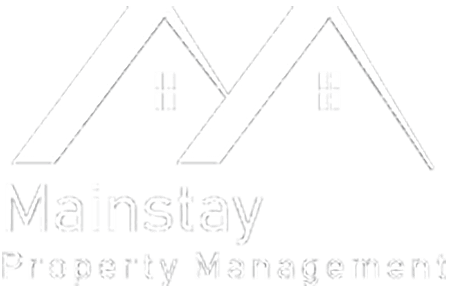To fully maximize your real estate investment and ensure you’re making sound financial decisions, tracking specific rental property metrics is crucial. These numbers and formulas will help you determine the state of your current investments and make decisions about potential ones.

Investing in real estate, especially income-generating real estate like a rental property, requires a business approach. You must make data-driven decisions and examine all aspects of your opportunities.
Whether you’re a new or experienced investment property owner, it’s always a good idea to brush up on the key metrics you should consider and track to maximize your rental property’s ROI.
In this article, we’ll go over the most important rental property metrics to track both while making a new acquisition and managing your current investments.
Key Real Estate Metrics Investors Should Know
Before making the decision to acquire a rental property or determine how your investment is performing, you’ll need to calculate and track the following REI metrics.
1. Cash Flow
Your cash flow is the net income you collect at the end of the month. This amount excludes what you spent on expenses and operating costs. It’s important to track cash flow as this is the active “spendable” profit you’re earning from your investment.
So, if you charge $2,000 per month for rent, but your total expenses are $1,200, your cash flow is $800 per month. This number will tell you if the current methods you’re using to manage your rental property are sustainable over the long term.
2. Net Operating Income (NOI)
There are more expenses that come along with acquiring a rental property than just the purchase price. You’ll have to keep up with maintenance, repairs, and possibly commissions to find new tenants. These are known as operating expenses.
It’s important to remember not to include your mortgage payments in these expenses as they aren’t considered to be operating costs.
The net operating income (NOI) is an income statement that determines how much you’re earning from your investment based on its day-to-day operations. You can also use this to determine how much a rental property could potentially earn when searching to buy a new one.
3. Cap Rate
The capitalization rate, or cap rate, is the ratio between your income from the investment and the capital you invested. To calculate, you’ll divide the net operating income (NOI) by the property’s value.
To calculate the cap rate in the property acquisition phase you would divide the estimated NOI by the property’s sale price. This is an important metric to determine if the investment will be risky or not. The higher the cap rate, the more risk involved.

4. Cash on Cash Return
Cash on cash return is how much you earn on the cash you invested in the property. You must include the debt service and mortgage to determine this. For example, if you put a 20% down payment on the property and have a mortgage for 80%, you would calculate the cash on cash return just on the down payment.
To calculate cash on cash return, you’ll divide the net cash flow by the cash you invested in the property. The net cash flow should consider the debt service and mortgage.
This metric can help you determine how you can finance your next real estate investment.
5. Internal Rate of Return (IRR)
The internal rate of return (IRR) estimates how much interest you earn on the money you invested in the property. This is an essential metric to consider when acquiring a new rental property as it will give a rough estimate of how much income you’ll earn.
If you’re torn between two or three properties, run the numbers through the IRR formula to see which is the better investment and will earn you more in the long run. The higher the IRR, the better.
If you need help with understanding the formula for rental properties in Anne Arundel County or want to know more about IRR, give us a call at (443) 585-3779 and we’d be happy to answer any questions.
6. Gross Rent Multiplier (GRM)
The gross rent multiplier (GRM) helps property investors calculate the property’s value in a rough estimate. To calculate this, divide the property price by the gross rental income. If the property is not generating income at the time of purchase, you may use an estimate.
It’s important to mention that investors should not make investment decisions based on just the GRM. This metric is to determine whether the property is a potentially good deal.
7. Operating Expense Ratio (OER)
The operating expense ratio helps investors determine if a rental property is earning the maximized income. To calculate this, you must divide the operating expenses by the property’s operating income.
This metric does consider the property’s depreciation, making it valuable for investors to track. It’s a good idea to calculate this metric once a year to see if operating costs are rising and if there need to be adjustments made.
8. Debt Service Coverage Ratio (DSCR)
When acquiring a new property, mortgage lenders will determine the debt service coverage ratio (DSCR). To calculate this, they divide your net income by your debt payments to determine your ability to repay the loan.

9. Vacancy Rates
One of the most feared and inevitable parts of being a landlord is having a vacant rental property between tenants. During this time, you are not generating income but still have expenses and operating costs to pay.
To avoid high vacancy rates, it’s important to make an effort to find long-term tenants who are likely to renew their leases. But just in case you have a vacancy, it’s a good idea to have a 5-10% buffer in your finances to cover this time.
10. Loan to Value Ratio (LTV)
The loan to value ratio (LTV) determines how much leverage you have on the property. As you pay your loan over time, your LTV will increase as you earn more equity.
When purchasing a property, the mortgage lender will express how much they will loan you with an LTV ratio.
11. Capital Expenditures (CapEx)
The major improvements and renovations you make to your rental property are known as capital expenditures or CapEx. These expenses will typically extend the life of the property and increase its value.
Some of these expenses are tax-deductible or earn you tax credits to better maximize your investment.
Track Metrics and Maximize Your Real Estate Investment
Making the most of your rental property investment is much more than keeping track of operating costs versus how much rent you collect. There are quite a few crucial metrics every real estate investor should know and calculate. But what if you don’t have the time or expertise for that?
You can let Mainstay Property Management take care of it for you. We treat your investments like they’re our investments and proactively track all rental property metrics looking for ways to make you more money.
Mainstay Property Management is Maryland’s most innovative property management company. From helping investors make data-driven decisions to managing the everyday tasks of a rental property, we help maximize rental property investments.
If you’re considering purchasing a rental property or need help managing one, read our article 9 Reasons That Will Make You Want to Hire a Property Manager Today.

